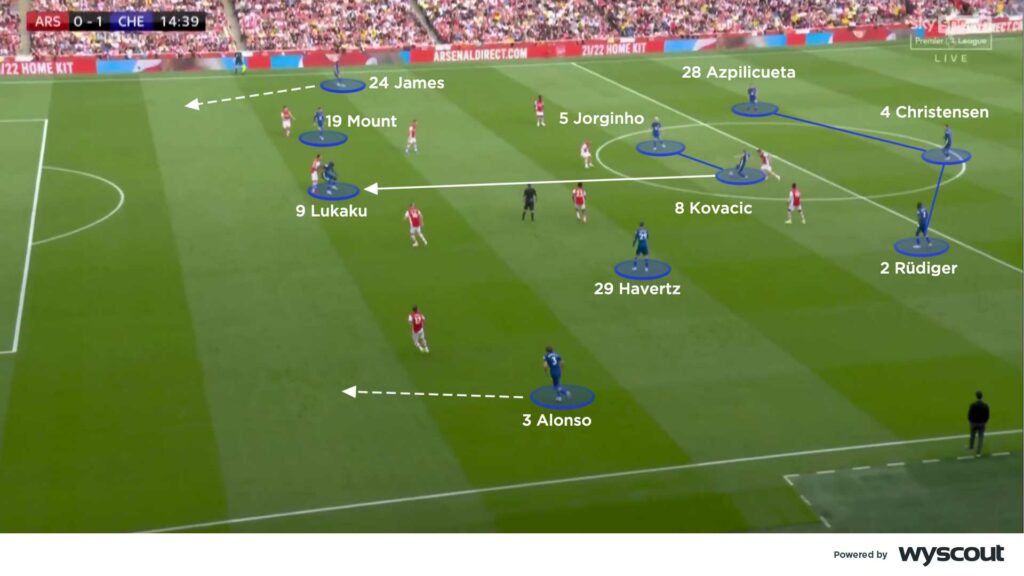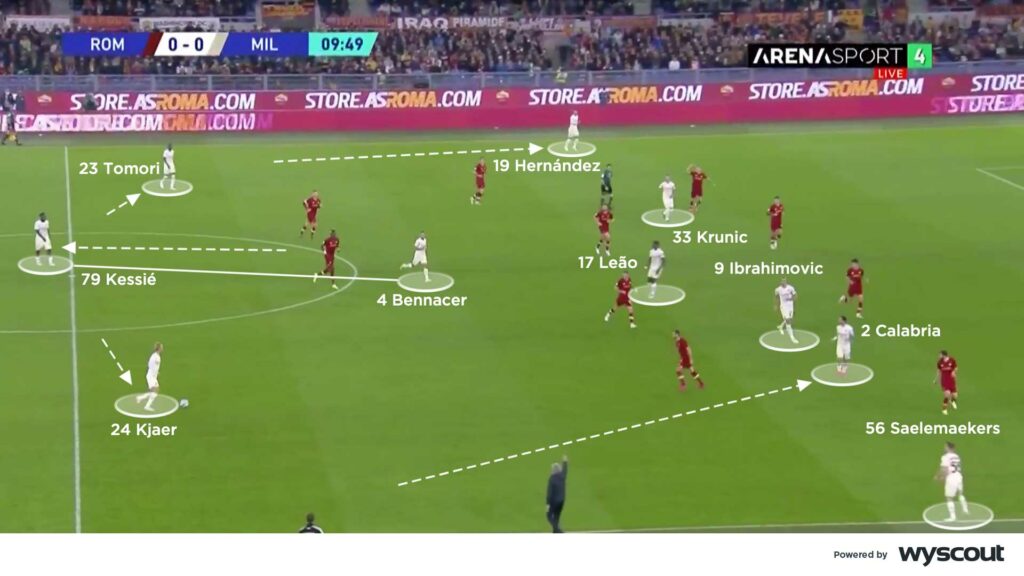This is the second in a series looking at Blackpool’s tactics in all aspects of the game. The previous piece, published in September, looked at how Blackpool replicate the world’s elite by attacking with five players. In this article, we’ll look at Blackpool’s midfield – and how we use a double pivot to get the best out of our squad.
Neil Critchley has built a reputation as a ‘tinkerman’; only naming an unchanged side five times in his 80 games in charge of the Seasiders. However, while players come in and out and formations change, the presence of a “double pivot” in midfield has become a mainstay of his set-up. Whether, it is Dougall and Wintle, Dougall and Stewart, or (as we saw at Swansea) Wintle and Connolly – there is always a dynamic midfield duo to protect the centre-backs and begin our build-up play.
What is a double pivot, and how frequently do Blackpool use it?
A double pivot is a low central-midfield or defensive-midfield pairing. The two midfielders are positioned in front of the central defenders, inside the full-backs or wing-backs, and behind any midfielders with more attacking duties. There are lots of famous contemporary examples, such as Kalvin Phillips and Declan Rice at EURO 2020 – or Mateo Kovacic and Jorginho in Thomas Tuchel’s Chelsea.
The term is most frequently associated with a 4-2-3-1 formation, where the midfield duo operate behind a single number 10 . However, Critchley has also implemented it within both his preferred 4-4-2 and the ‘new’ 3-4-2-1 played against Swansea. It has become a hallmark of his Blackpool side, with our manger employing a double-pivot in every game this season.

Blackpool also used a double-pivot for most games last season; with the exceptions being the roughly 20% of games (mostly EFL Trophy & Cup games) where Blackpool experimented with a 4-3-3. A 4-3-3 typically only has one holding/defensive midfielder, who can get dragged away from the centre of the pitch with movements out towards the flank and leave the defence exposed. This experiment failed because Blackpool don’t have a world-class defensive midfielder (e.g., Fernandinho, Kanté, Partey) with the pace and discipline needed to prevent being stranded out of position. As a result, the side remained vulnerable to counter attacks.

Why do Blackpool use a “double-pivot”?
The move from a 4-3-3 hints at why Critchley prefers his defensive-midfield duo; they provide defensive solidity. To no-one’s surprise, two midfielders screening the centre backs provide more defensive protection than a “single-pivot”. It’s more players to intercept forward passes, or compete for loose balls following direct passes from the opposition. These are things that both Wintle and Dougall excel at, with their nippy tackles, quick interceptions and under-appreciated ability in the air.
A less obvious benefit is that a second midfielder operating close to the centre-backs provides additional passing options as you seek to play out from the back. Regular readers may remember that when Fulham came to Bloomfield Road, they played with a single defensive midfielder (Seri). Jerry Yates and Tyreece John-Jules successfully removed him from the game by cutting off the passing angles from both centre-backs. As a result, Fulham struggled to build centrally from the back and had to force the ball long, or wide and into Blackpool’s press. If Fulham had a second defensive midfielder to receive the ball, like Blackpool did, they wouldn’t have been forced into this situation.
Once they receive the ball, any of Kenny Dougall, Kevin Stewart and Ryan Wintle can use it well. Blackpool are blessed with three midfielders who are comfortable in possession, have a good passing range (particularly Wintle) and who can switch the play. They can combine short passes under pressure with progressive passes into teammates who are further forwards into the likes of Keshi Anderson and Josh Bowler.
But the real benefit to Blackpool is how the double pivot lets Neil Critchley optimise the rest of the squad’s talents. We’ve previously written about how Blackpool use a “Front 5” to attack – normally leveraging at least one of our talented attacking full-backs (e.g., Garbutt) to create overloads in the final third. It is the presence of Wintle and Dougall beneath the ball that allows one or both of our full-backs to push forward simultaneously. These two midfielders can then share responsibility for breaking up or delaying opposition counter-attacks. They can also cover both sides of the pitch, as and when the full-backs attack at the same time. A single-pivot system like a 4-3-3, where your advanced midfielders go and join the attack, would leave Garbutt and Gabriel stuck in defence with their talents under-utilised.
One of the most important factors for a midfielder to consider in a double pivot is an awareness and understanding of spaces and pressure, especially in central areas. Both must know where each other are at all times and work together to ensure they’re both doing different jobs at different times, simultaneously, both in and out of possession.
A testament to Blackpool’s coaching?
Like every tactic, the double-pivot requires a lot of time and quality coaching to overcome its limitations. Blackpool were promoted last season with the best defensive record, but only scored a mediocre number of goals moving forward. While a double pivot provides defensive stability, one less attacking players on the pitch leads to more complicated movements and rotations as you seek to restore numbers in attack (such as Garbutt and Gabriel pushing up). These rotations take time to master and require tactically intelligent players who understand where they should be on the pitch given the positions of all their team-mates.
The midfield two must also be coached intensively. Both players in a double pivot must constantly be aware of the position of their midfield partner. They must never offer on the same lines or occupy the same spaces. If they’re always in the same place at the same time, then you might as well have just played a single midfielder.
Neil Critchley isn’t alone in getting this system to work for him, and it highlights again how he is implementing what he has learnt at the very top of the game. Chelsea’s double pivot is used in a 3-4-2-1 formation where Jorginho and Mateo Kovacic and N’Golo Kanté shield the back-three and launch attacks to the feet of Romelu Lukaku or Kai Havertz. Reece James and Ben Chilwell play the role of the rampaging full-backs, each doing their best impressions of Jordan Gabriel and Luke Garbutt to create goals. Declan Rice plays in two elite double pivots, for both West Ham (with Tomas Soucek) and England (with Kalvin Phillips).

Over on the continent, Bayern Munich have dominated the Bundesliga with Joshua Kimmich and Leon Goretzka as a double pivot. Kimmich has experience at full-back, meaning he can defend effectively in one-on-one situations and Alphonso Davies has freedom at left-back to bully the opposition in the final third. AC Milan use it slightly differently, where one midfielder will drop into defence and they’ll use a single pivot in front, again allowing for wing backs to push forwards.

Conclusion
Playing with two “defensive midfielders” is often misconstrued as ‘negative’/’defensive’ football. However, like many of the world’s elite, Blackpool have leveraged the power of the double pivot to allow for rampaging wing-play from the full-backs while maintaining defensive solidity and the balance of the side. It is this midfield set-up that gives the platform for Blackpool to attack with five players and seek to dominate games. It isn’t always glamorous – but the dynamic duo have been vital to our success.
If you enjoyed this, have a listen to our recent chat with the wonderful Ali Maxwell in our most recent podcast (link below). Also watch out for the next part of the series, where we’ll be analysing the centre of Blackpool’s defence!
Don’t forget to turn on notifications on Twitter and Instagram to see our latest content first. Please help us out by commenting, liking and retweeting our posts to spread the word across the Blackpool fans. Up the mighty Pool.

